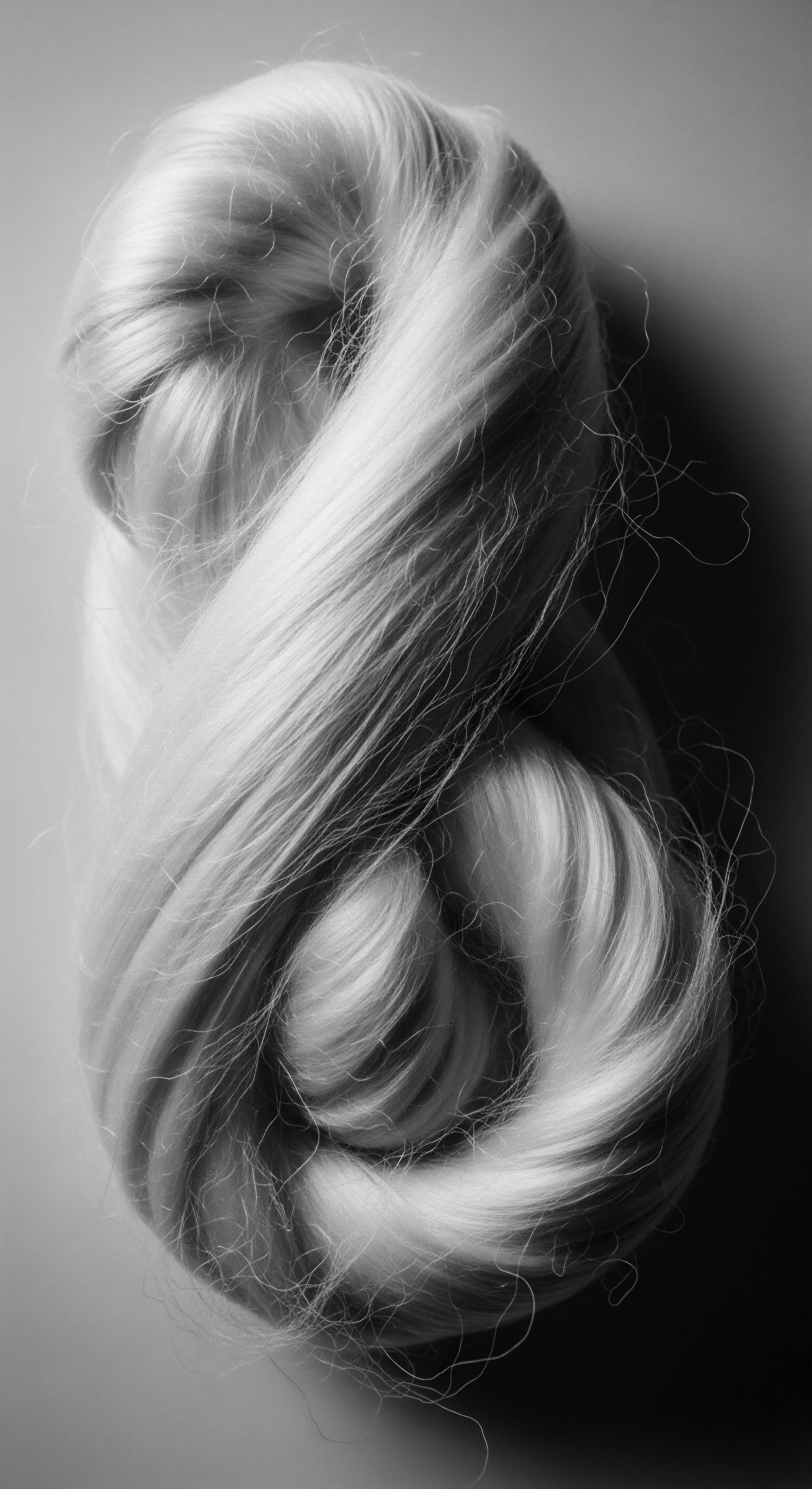
Fundamentals
Within Roothea’s expansive ‘living library,’ the understanding of Low Porosity Hair unfurls not merely as a scientific classification, but as a profound narrative interwoven with the very heritage of textured strands. This initial elucidation serves as an invitation, a gentle beckoning into the intrinsic nature of hair that often presents as a silent, resilient guardian of its own inner world. At its core, the designation of low porosity describes hair whose outermost layer, the Cuticle, maintains a tightly bound, compact structure.
These cuticles, akin to meticulously laid shingles on a revered ancestral home, lie flat against the hair shaft, creating a surface that is remarkably smooth and often gleams with a natural luster. This inherent architectural arrangement means that water and moisturizing agents do not readily penetrate the hair’s inner core.
For many individuals with textured hair, particularly those whose lineage traces back through Black and mixed-race communities, encountering low porosity hair can present a distinctive set of experiences. The initial perception might be that moisture simply beads upon the surface, rather than sinking in, leading to a sense of perpetual dryness even after product application. This characteristic behavior is not a flaw; rather, it is a testament to the hair’s natural defenses, a biological legacy that has perhaps offered protection against environmental rigors over generations.
Understanding this fundamental aspect of low porosity is the initial step in cultivating a harmonious relationship with one’s hair, acknowledging its inherent properties before attempting to impose external expectations. It is a recognition of the hair’s profound biological blueprint.
Low porosity hair signifies a tightly sealed cuticle layer, a natural protective barrier that shapes how moisture interacts with the strand.
The immediate implication of this tightly sealed cuticle is that while the hair may resist absorbing moisture, once hydration finds its way within, it tends to be retained with remarkable efficiency. This dual nature forms the very essence of its definition ❉ a challenge in initial moisture absorption, yet a blessing in moisture retention. Ancestral wisdom, passed down through the ages, often intuited these characteristics long before modern science provided a detailed explanation.
Traditional practices frequently involved methods that, unknowingly to their practitioners, addressed the very nature of low porosity hair, such as the use of warmth to facilitate penetration or the application of specific emollients that offered protective sealing. These practices were not born of scientific treatises but from generations of lived experience and an intimate understanding of the hair’s responsive rhythms.
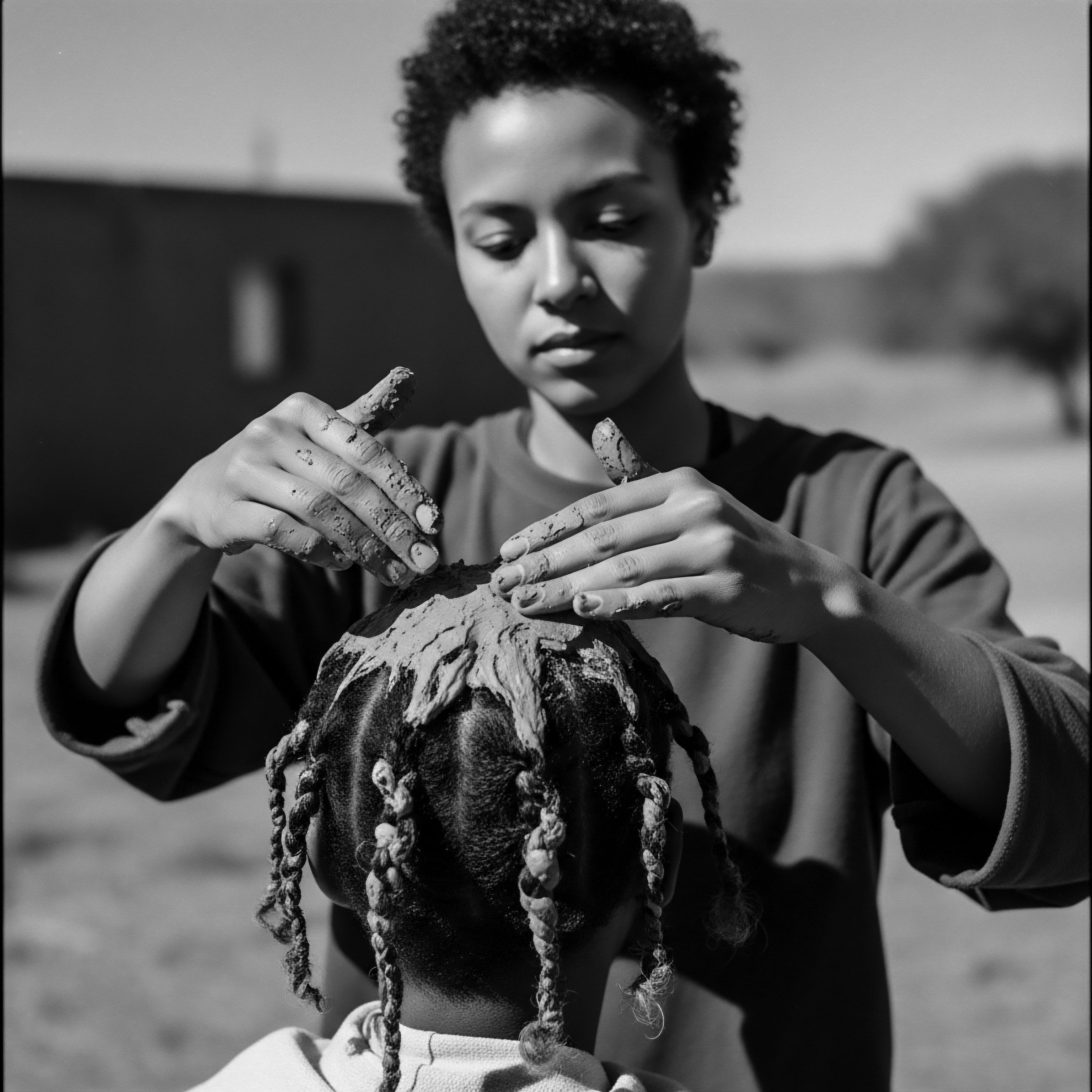
The Protective Veil of the Cuticle
The hair’s cuticle, the subject of our discussion, is composed of dead, flattened cells that overlap each other from the root to the tip, forming a protective shield. For low porosity hair, these overlapping scales are pressed closely together, presenting a formidable barrier. This density contributes to the hair’s inherent hydrophobicity, a natural aversion to water.
It is a biological marvel, a finely tuned mechanism that shields the delicate inner cortex from external aggressors and the daily wear of existence. This protective aspect is particularly pronounced in textured hair, where the coiled structure itself can further compact the cuticle, adding another layer to its inherent resilience.
Recognizing the meaning of this natural resistance allows for a shift in perspective, moving away from frustration and towards informed care. It encourages an approach that respects the hair’s boundaries, employing strategies that gently invite moisture inward rather than attempting to force it. This respect for the hair’s natural state is a cornerstone of Roothea’s ethos, recognizing that true hair wellness begins with deep listening to the strands themselves and honoring their ancestral design.

Intermediate
Moving beyond the foundational understanding, an intermediate exploration of Low Porosity Hair reveals a more intricate dance between the hair strand and its environment, particularly within the rich context of textured hair heritage. The tightly closed cuticle, the defining feature of low porosity, is not merely a static barrier; it actively dictates the behavior of the hair, influencing everything from drying time to product efficacy. Individuals with low porosity hair frequently notice that their hair takes a significantly longer time to become fully saturated when wet, and similarly, an extended period to air dry completely. This is a direct consequence of the cuticle’s compact arrangement, which impedes the rapid absorption of water molecules.
The phenomenon of products appearing to “sit” on the hair’s surface, rather than absorbing, is another common experience for those with low porosity. This observation speaks to the hair’s inherent resistance to external substances, a trait that, while challenging for modern product application, might have served as an evolutionary advantage in certain ancestral climates, protecting the hair from excessive moisture or environmental pollutants. The implication here is that traditional methods of care, often relying on natural ingredients and gentle, prolonged application, may have intuitively circumvented this absorption challenge.
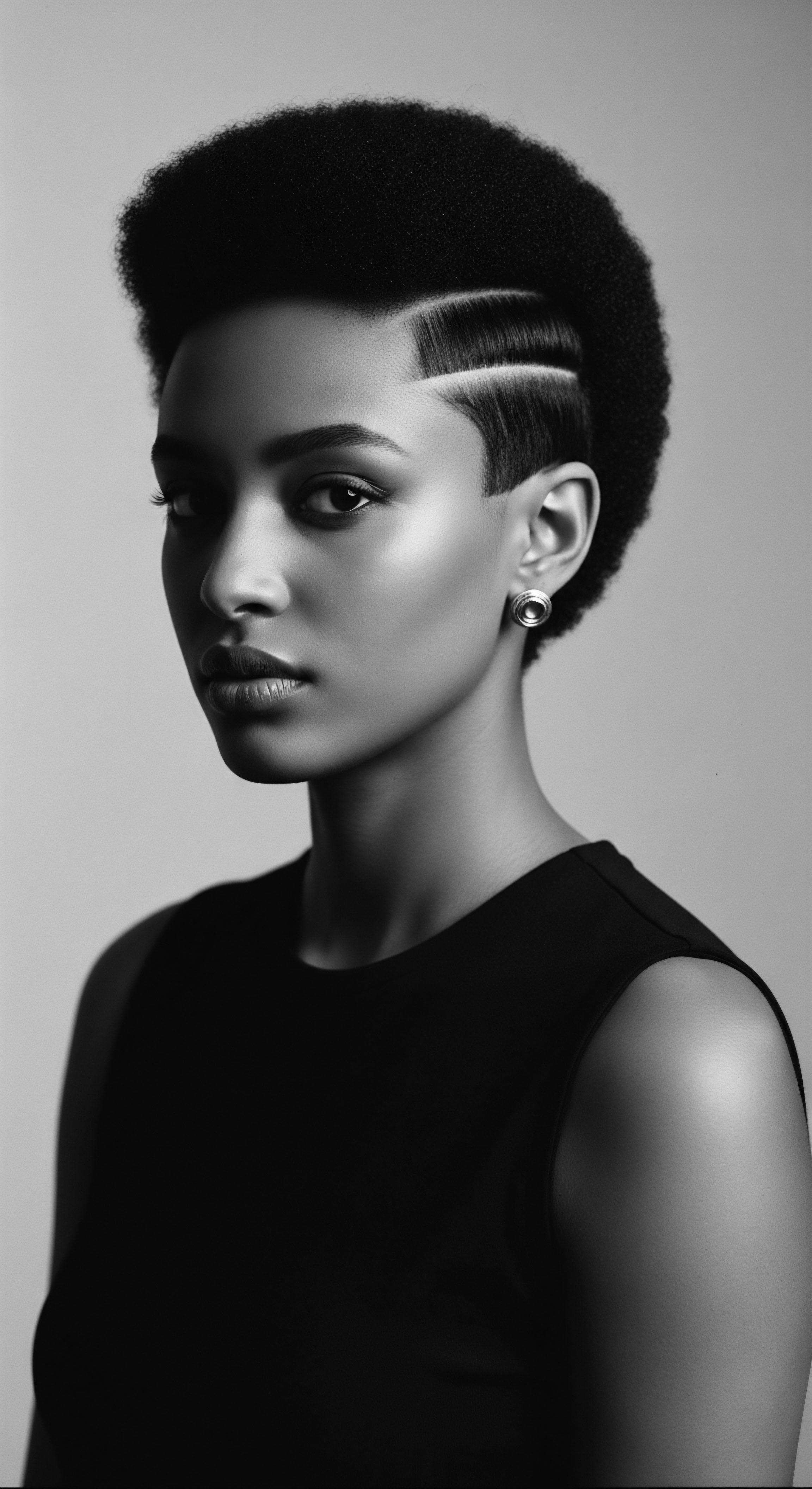
Navigating Moisture Absorption and Retention
The key to nurturing low porosity hair lies in strategies that gently encourage the cuticle to lift just enough to allow moisture to enter, without compromising its protective integrity. This approach often involves the mindful application of warmth. For generations, various African and diasporic communities have employed methods that inadvertently supported this principle.
Consider the widespread practice of steaming the hair, whether through the use of warm, damp cloths or by simply conditioning in a steamy environment. This application of gentle heat temporarily causes the cuticle scales to swell and subtly rise, creating microscopic pathways for water and nutrient-rich compounds to penetrate deeper into the cortex.
Similarly, the choice of moisturizing agents holds particular significance. Heavy butters and thick oils, while deeply nourishing for some hair types, can often lead to product buildup on low porosity strands, creating a greasy film that further obstructs moisture absorption. This understanding points towards the preference for lighter, more penetrating oils and water-based formulations that can more readily pass through the tightly sealed cuticle. The wisdom of ancestral care often saw the use of lighter infusions or diluted preparations, allowing for effective nourishment without overburdening the hair.
- Warmth Application ❉ Utilizing steam or warm towels during conditioning treatments helps the cuticle gently open, facilitating moisture entry.
- Lightweight Formulations ❉ Prioritizing water-based products and lighter oils like grapeseed or jojoba ensures absorption without excessive residue.
- Consistent Cleansing ❉ Regular, gentle cleansing is essential to prevent product accumulation that can hinder moisture absorption over time.
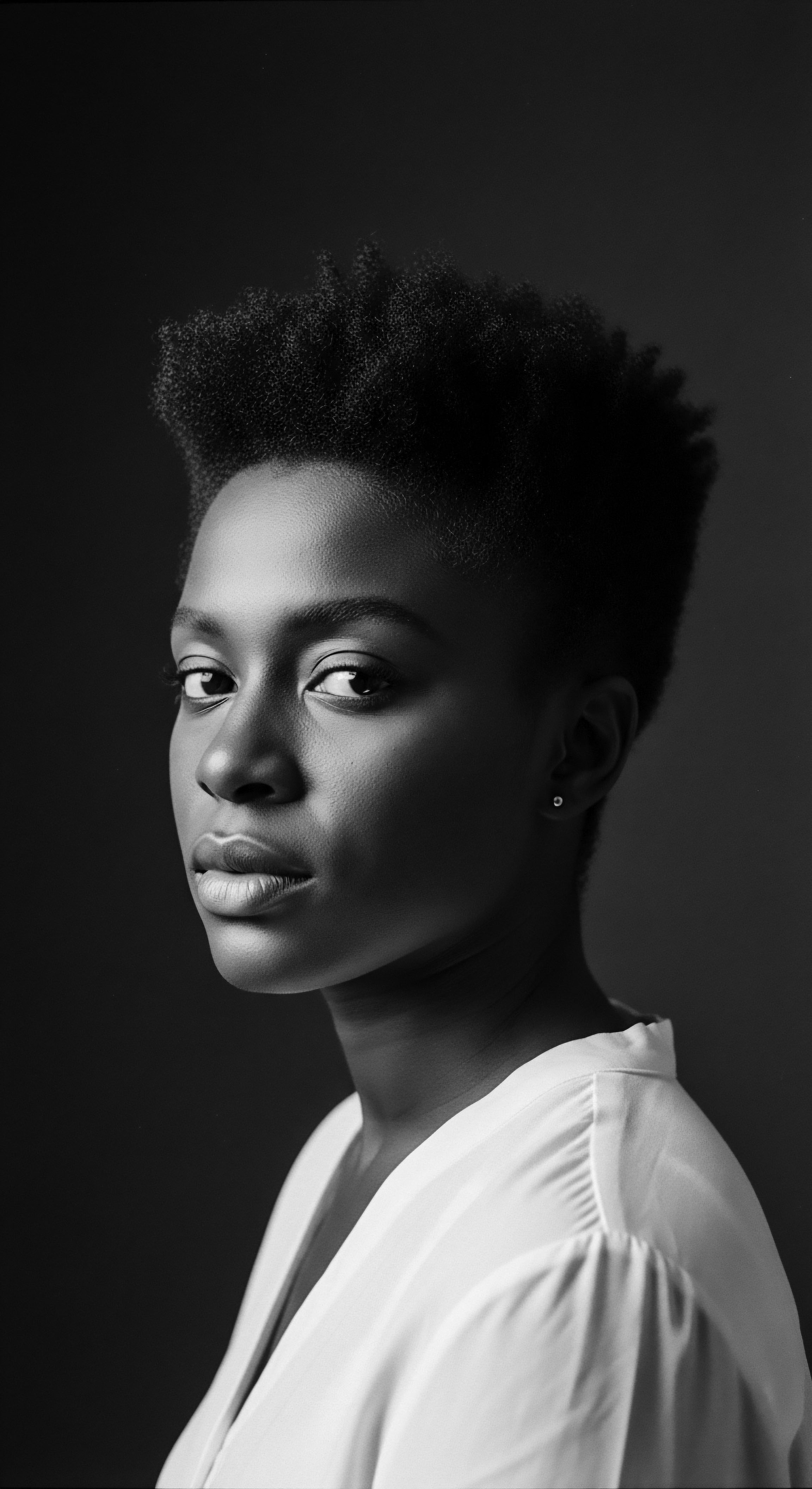
The Echo of Ancestral Practices
The recognition of hair porosity, even if not articulated in scientific terms, is deeply embedded in the historical care practices of Black and mixed-race communities. For example, the meticulous, often lengthy, processes of preparing natural oils and herbal infusions, common in many West African hair traditions, were not just about the ingredients themselves but also about the method of application. The gentle warming of oils, the patient massaging into the scalp and strands, and the practice of protective styling afterward all served to maximize the benefits for hair that inherently resisted quick absorption.
This ancestral knowledge, refined over countless generations, stands as a testament to an intuitive grasp of hair’s diverse needs. The very act of caring for hair was a communal ritual, a moment for bonding and the transmission of embodied wisdom. The methods employed, whether it was the use of shea butter for its sealing properties or the practice of braiding hair to retain moisture, were all responses to the hair’s intrinsic characteristics, including its porosity. These practices offer a living bridge between historical understanding and contemporary scientific insight.
| Traditional Method/Ingredient Warm Oil Treatments (e.g. Shea Butter, Coconut Oil) |
| Associated Low Porosity Benefit Facilitates deeper oil penetration and seals moisture. |
| Cultural Context/Heritage Widespread in West African communities for centuries, used for protection in harsh climates. |
| Traditional Method/Ingredient Steaming Hair (e.g. with warm cloths) |
| Associated Low Porosity Benefit Gently opens cuticle scales for improved water absorption. |
| Cultural Context/Heritage Intuitive practice across many textured hair traditions to enhance product efficacy. |
| Traditional Method/Ingredient Rhassoul Clay Washes |
| Associated Low Porosity Benefit Cleanses without stripping natural oils, preventing heavy buildup. |
| Cultural Context/Heritage Moroccan tradition, known for its gentle purification and mineral richness. |
| Traditional Method/Ingredient These ancestral practices, often predating scientific explanations, reflect an innate understanding of hair's responsive nature, particularly for those with low porosity. |
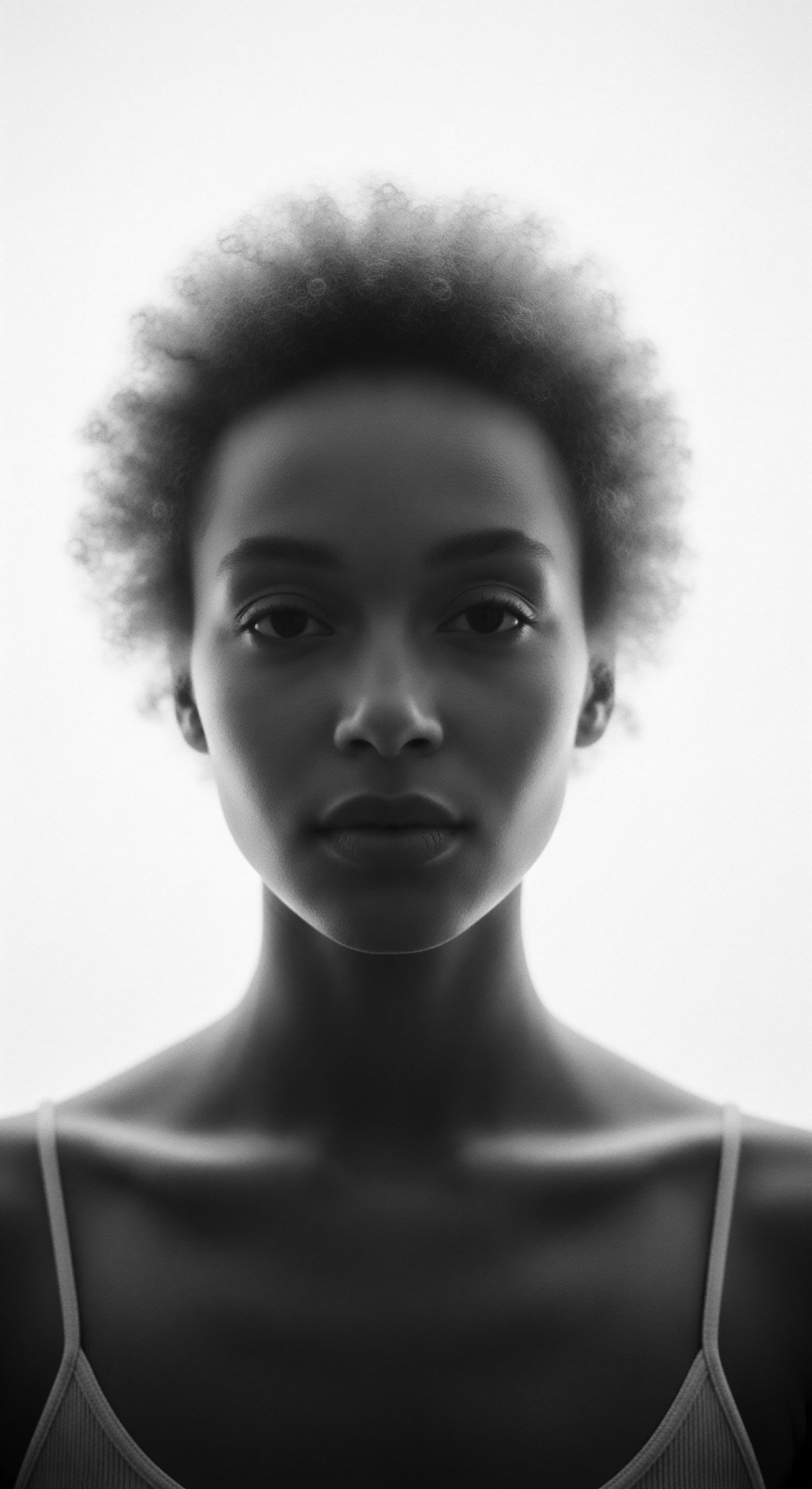
Academic
The academic meaning of Low Porosity Hair transcends simple observation, delving into the intricate biomechanical and chemical architecture of the hair fiber, while simultaneously confronting its profound implications within the historical and socio-cultural tapestry of textured hair. This deep examination reveals that the hair shaft’s outermost layer, the Cuticle, is not merely a set of scales but a complex, hydrophobic shield primarily governed by a unique lipid layer, rich in 18-Methyl Eicosanoic Acid (18-MEA). This covalently bound fatty acid layer renders the surface of healthy, untouched hair naturally resistant to water, a characteristic amplified in low porosity strands where the cuticle layers lie in exceptionally tight, overlapping formations.
The inherent hydrophobicity of low porosity hair, therefore, represents a natural state of robust protection, safeguarding the inner Cortex from environmental stressors and chemical insults. The challenge it presents in moisture absorption is a direct consequence of this highly efficient barrier. From an academic perspective, understanding this intrinsic resistance is paramount, as it informs the development of effective hair care strategies that respect the hair’s biological integrity rather than attempting to override it. This necessitates a shift from a generalized approach to one that is acutely attuned to the hair’s specific structural characteristics.
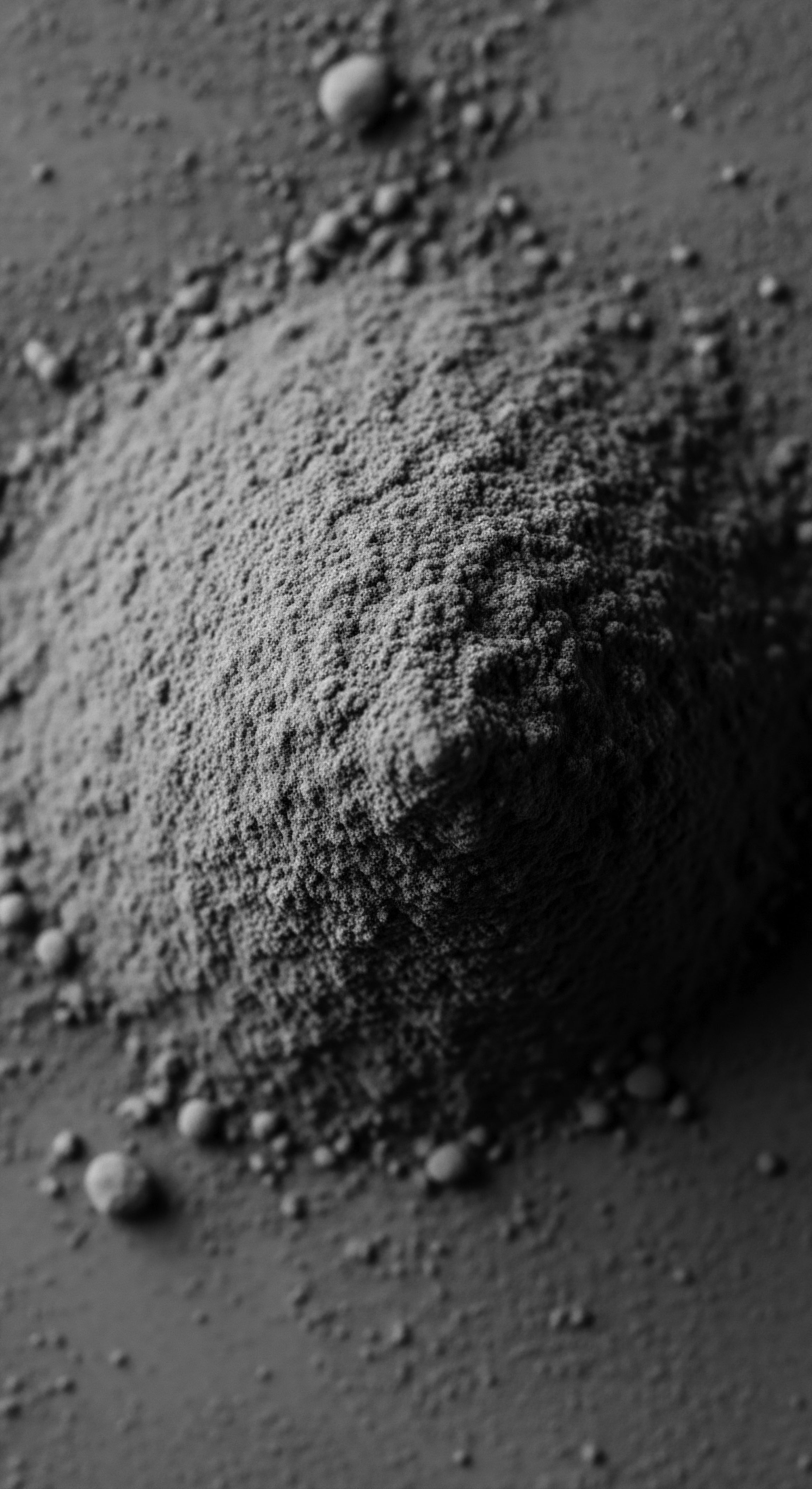
Biophysical Underpinnings of Low Porosity
The structural integrity of the cuticle in low porosity hair means fewer raised or compromised scales, leading to minimal gaps for water or larger molecules to penetrate. This characteristic is particularly significant for Afro-textured hair, which, despite its often tightly coiled or helical structure, can exhibit low porosity. The unique morphology of coiled hair, with its uneven distribution of cortical cells and points of curvature, naturally exposes certain cuticle edges, yet the overall compact nature of low porosity mitigates this. The very act of moisture repelling, often observed as water beading on the hair surface, is a direct manifestation of this robust hydrophobic layer and the tightly sealed cuticle.
The chemical composition of the hair surface, particularly the integrity of the 18-MEA layer, plays a crucial role in determining porosity. Damage from chemical treatments, excessive heat, or even prolonged environmental exposure can disrupt this layer, increasing porosity. Conversely, low porosity hair often indicates a relatively intact and healthy surface lipid layer, a natural advantage that, if properly managed, contributes to strength and resilience. The scientific elucidation of these microstructural details provides a profound appreciation for the hair’s protective capabilities, which have been historically navigated through ancestral wisdom.
Low porosity hair, scientifically defined by its compact cuticle and intact hydrophobic lipid layer, offers a natural shield against external elements.
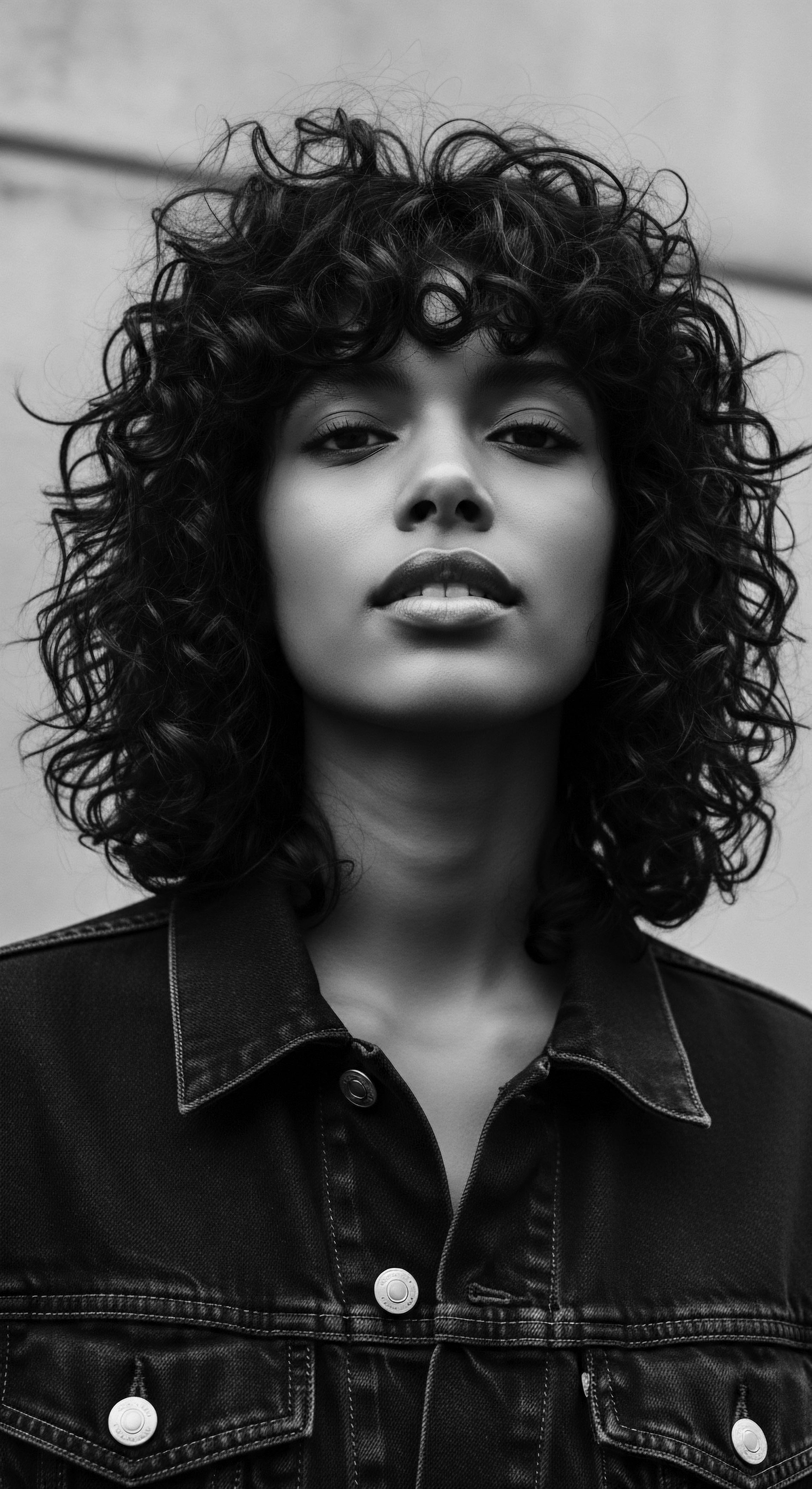
Intersections of Science, Heritage, and Bias
The academic examination of low porosity hair, especially within the context of textured hair, cannot be divorced from the broader historical and cultural narratives that have shaped the understanding and perception of Black and mixed-race hair. For centuries, Eurocentric beauty standards often dismissed the unique properties of Afro-textured hair, labeling it as “unruly” or “difficult” without a genuine scientific inquiry into its distinct biological characteristics. This historical marginalization extended even into scientific and forensic domains, where a lack of nuanced understanding could lead to significant societal consequences.
A powerful, often overlooked, example of this intersection lies in the realm of forensic science, particularly hair drug testing. Studies have revealed a disproportionately high rate of false-positive hair test results for African-Americans. (DeLauder, 2003) This alarming disparity prompted critical inquiry, with researchers proposing that Cultural Hair-Care Practices, rather than genetic differences alone, were a major contributing factor to this bias. (DeLauder, 2003, p.
58) The very methods used by Black individuals to moisturize and protect their hair, often involving oils and butters, could inadvertently influence the absorption and retention of external substances on the hair shaft, leading to skewed test results. (DeLauder, 2003) This case powerfully illuminates how the unique properties of textured hair, including aspects related to its porosity and the traditional care regimens developed to manage it, were misunderstood or overlooked by a scientific framework that did not account for diverse hair characteristics.
The phenomenon highlighted by DeLauder underscores a critical academic and ethical imperative ❉ the need for scientific methodologies to be culturally competent and informed by the lived experiences and ancestral practices of diverse populations. The hydrophobic nature of low porosity hair, and the traditional use of occlusive agents like shea butter or coconut oil to seal in moisture, could, in certain contexts, create a surface that retains external contaminants differently than hair with more open cuticles. This does not imply fault in traditional practices but rather a glaring oversight in scientific interpretation that failed to consider the complex interplay between hair biology, environmental factors, and centuries of inherited care wisdom.
- Cuticle Integrity ❉ Low porosity hair typically presents with a robust, intact cuticle layer, minimizing water absorption.
- Hydrophobic Surface Lipids ❉ The presence of 18-MEA contributes significantly to the hair’s water-repelling nature.
- Product Accumulation ❉ The tightly sealed surface can lead to product buildup if formulations are not carefully chosen.
- Historical Misinterpretation ❉ The unique biophysical properties of textured hair, including its porosity, have historically been misinterpreted in scientific contexts, leading to biases. (DeLauder, 2003)
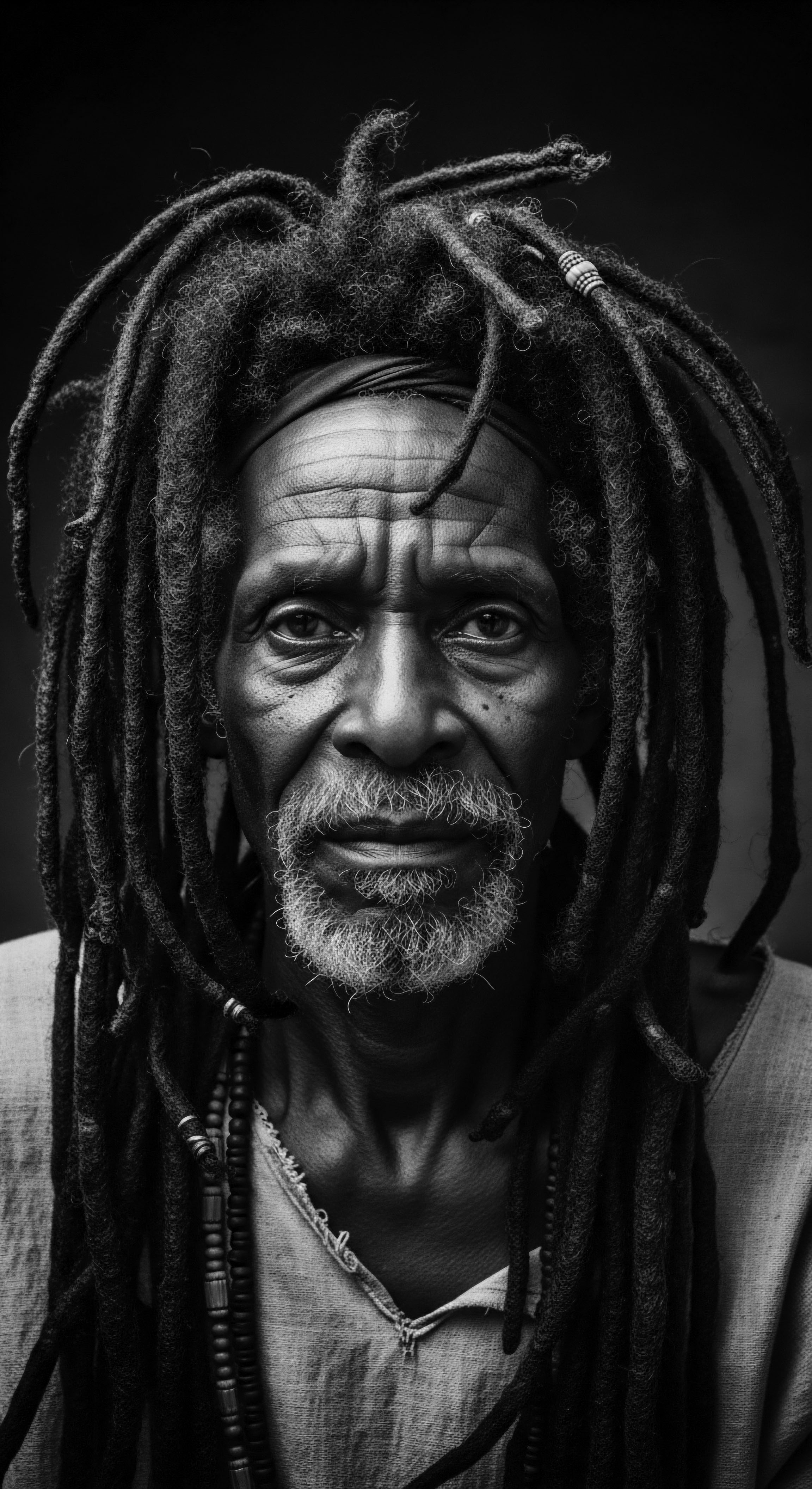
Ancestral Wisdom and Modern Validation
The deep ancestral knowledge within Black and mixed-race communities often provided practical solutions to the very challenges that modern science now meticulously delineates. The use of heat, whether from the sun, warm water, or steamy environments, to prepare hair for moisture absorption was a common practice, intuitively addressing the low porosity characteristic. The preference for lighter, more penetrating oils in certain contexts, or the meticulous layering of products to ensure hydration, reflects an embodied understanding of how to work with, rather than against, the hair’s natural inclination.
Moreover, the widespread practice of protective styling, from intricate braids to elaborate twists, served not only as an expression of identity and artistry but also as a practical means of preserving moisture and shielding the hair from environmental damage. These styles, by minimizing manipulation and exposure, supported the hair’s natural ability to retain moisture once it had been introduced. The continuous lineage of these practices offers compelling evidence of a sophisticated, albeit unwritten, understanding of hair biology that predates contemporary scientific nomenclature.
| Aspect of Care Moisture Penetration |
| Ancestral Approach (Pre-20th Century) Application of warm water, steam from heated environments, gentle massage. |
| Modern Scientific Understanding (21st Century) Heat gently lifts cuticle scales; specific humectants and emulsifiers aid absorption. |
| Aspect of Care Product Choice |
| Ancestral Approach (Pre-20th Century) Natural oils (e.g. shea butter, coconut oil) and herbal infusions, often in diluted forms. |
| Modern Scientific Understanding (21st Century) Emphasis on lightweight, water-based products, penetrating oils (jojoba, grapeseed), and avoiding heavy silicones. |
| Aspect of Care Moisture Retention |
| Ancestral Approach (Pre-20th Century) Protective styling (braids, twists), head wraps, consistent oiling. |
| Modern Scientific Understanding (21st Century) Occlusive agents (certain oils, butters) create a barrier; proper pH balancing helps seal cuticles. |
| Aspect of Care Cleansing |
| Ancestral Approach (Pre-20th Century) Use of natural clays (e.g. Rhassoul) or plant-based soaps. |
| Modern Scientific Understanding (21st Century) Sulfate-free shampoos and clarifying treatments to prevent buildup. |
| Aspect of Care The enduring efficacy of ancestral methods in caring for low porosity hair is increasingly affirmed by contemporary scientific findings, bridging historical wisdom with modern knowledge. |
The historical experience of textured hair, particularly within Black communities, also includes a complex relationship with chemical processes designed to alter hair structure, such as relaxers. These treatments, often sought under societal pressure to conform to Eurocentric beauty standards, inherently increase hair porosity by disrupting the cuticle. This deliberate alteration stands in stark contrast to the natural state of low porosity, highlighting a historical tension between inherited hair properties and imposed aesthetic ideals. Understanding this dynamic is vital for a comprehensive academic grasp of low porosity hair, as it places the biological definition within a critical socio-historical context.
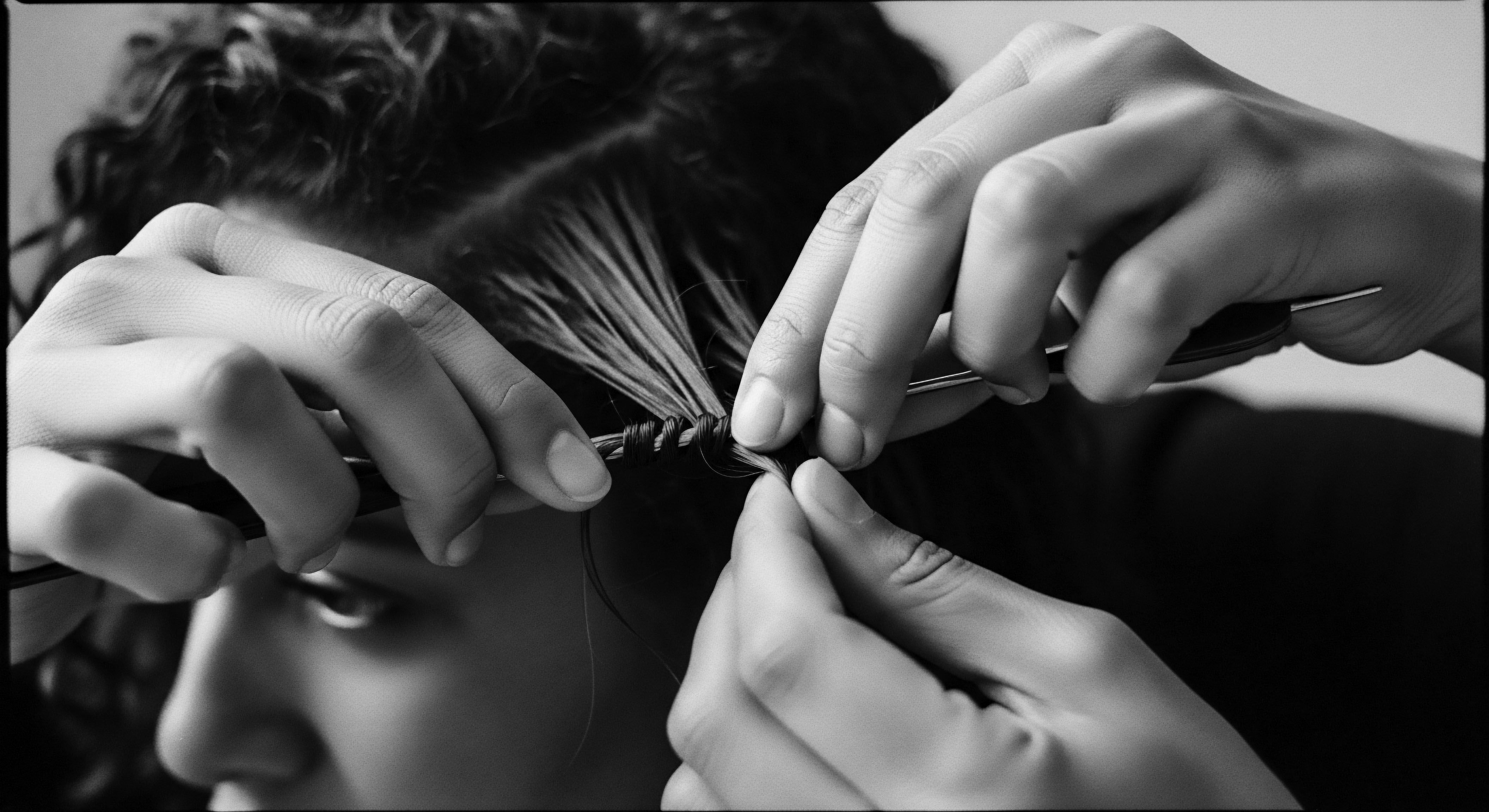
Reflection on the Heritage of Low Porosity Hair
The journey through the definition of Low Porosity Hair is more than an academic exercise; it is a profound meditation on the enduring heritage of textured hair, its innate resilience, and the deep wisdom embedded within ancestral practices. The tightly bound cuticle, once perceived as a challenge in modern hair care, reveals itself as a legacy of protection, a testament to the hair’s capacity for self-preservation. This intrinsic characteristic, particularly prevalent within Black and mixed-race hair experiences, speaks to a continuity of care that stretches back through generations, long before scientific instruments could discern molecular structures.
The ‘Soul of a Strand’ ethos invites us to look beyond superficial concerns, to truly comprehend the biological blueprint of our hair as a part of our living history. It encourages a reverence for the methods of our forebears, who, through observation and persistent care, developed ingenious ways to nourish hair that resisted moisture. Their practices, whether through the communal ritual of oiling or the protective artistry of braiding, were not merely cosmetic; they were acts of profound connection to the hair’s elemental biology and its place in community and identity. The recognition of low porosity today allows us to validate these ancestral truths, to see modern scientific findings as echoes of ancient wisdom.
Understanding low porosity hair invites a profound appreciation for ancestral wisdom and the enduring resilience of textured strands.
As we continue to voice the story of textured hair, the meaning of low porosity expands to encompass a celebration of uniqueness. It is a reminder that beauty standards have often failed to honor the diverse expressions of human hair, leading to a historical struggle for acceptance and informed care. The narrative of low porosity hair, therefore, is also a narrative of reclamation—reclaiming the knowledge of our hair’s inherent nature and the power of practices that genuinely serve its well-being.
It is about shaping futures where every strand is understood, honored, and celebrated for its distinct heritage and its unbound potential. This understanding allows us to move forward with informed choices, fostering a deeper, more harmonious relationship with our hair, rooted firmly in its rich, living history.
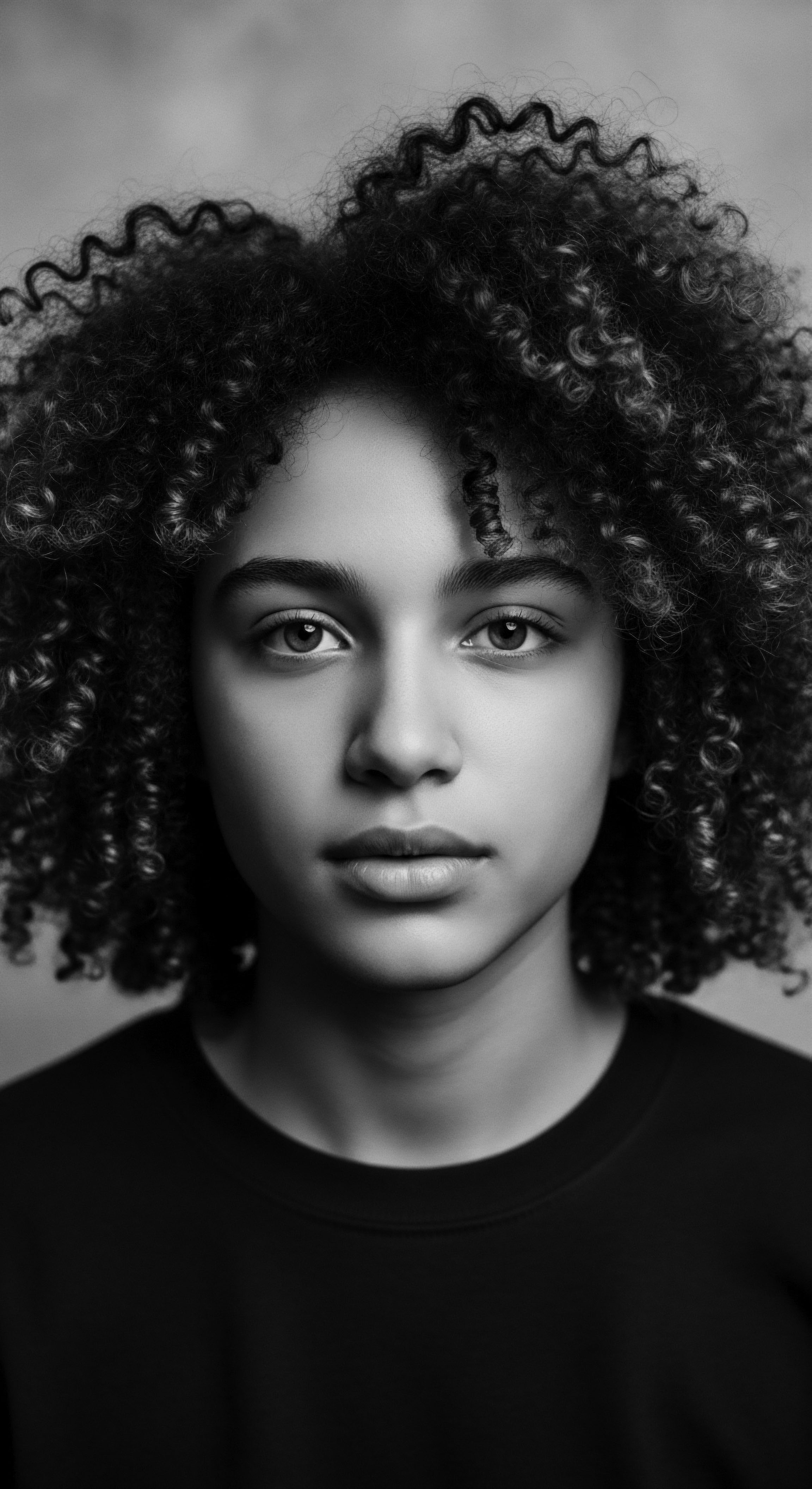
References
- DeLauder, S. F. (2003). Considering issues of Racial Bias in Drug Testing Where Hair Is the Matrix. Transforming Anthropology, 11(2), 58-61.
- Robbins, C. R. (2012). Chemical and Physical Behavior of Human Hair (5th ed.). Springer.
- Draelos, Z. D. (2014). Hair Cosmetics ❉ An Overview. Journal of Cosmetic Dermatology, 13(4), 289-294.
- Khumalo, N. P. & Gumedze, F. (2017). Hair and Scalp Disorders ❉ A Scientific and Clinical Approach. CRC Press.
- Gavazzoni Dias, M. F. R. (2015). Hair Cosmetics ❉ An Overview. International Journal of Trichology, 7(1), 2-15.
- Martínez-Velasco, M. A. & Aguilar, L. (2018). Hair Care ❉ An Illustrated Dermatologic Handbook. Springer.
- Myers, A. (2019). The Hair Care Revolution ❉ Understanding Your Hair’s Unique Needs. Beauty Unbound Publishing.
- Sprott, J. C. (2006). Hair ❉ Its Power and Meaning in Asian, African, and Other Cultures. Palgrave Macmillan.
- Adeleke, T. (2019). African Ethnobotany ❉ Plants, People, and Culture. University of Ibadan Press.
- Okeke, A. (2021). The Science of Black Hair ❉ A Comprehensive Guide to Textured Hair Care. Self-published.
